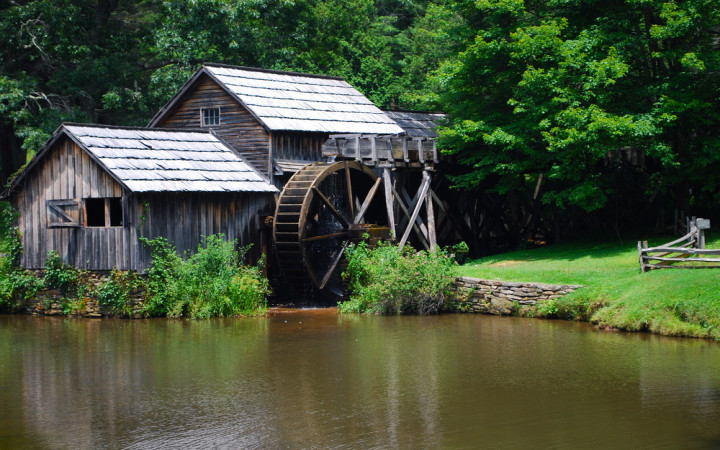Today’s Wonder of the Day was inspired by zachary. zachary Wonders, “how does a waterwheel work?” Thanks for WONDERing with us, zachary!
You may have learned about natural resources in school. But have you ever thought about just how important they are to your everyday life? The home you live in. The bus that takes you to school. The electricity that powers the lights. None of these would exist without help from the natural resources found on Earth.
Take running water for example. Humans have used the power of this resource for many years. Today, we’ll take a closer look at one invention powered by running water. Over the years, it helped humans with many important tasks. It has ancient roots, but was used until just over a century ago. What was it? The waterwheel, of course!
Waterwheels turn the energy of flowing or falling water into power. This power can then be used for other tasks. Have you ever seen a waterwheel? If so, you know that they are usually large wheels made of wood or metal. They have many blades or buckets along the outside edge. These help capture the power of moving water.
Waterwheels usually stand vertically (up and down). As they spin, they move an axle that lays horizontally (side to side). The axle moves its energy to a drive belt or set of gears. These then run a mechanism that carries out a task.
Just how old are waterwheels? They were first made by the ancient Greeks over 3,000 years ago. They spread across Europe and were widely used by medieval times. Separately, the horizontal waterwheel was invented in China sometime in the 1st century C.E.
Are these machines still used today? Not usually. However, they were still in use as recently as the early 20th century. You can still see waterwheels in action, though. They’re often part of historical displays at museums across the United States.
How were waterwheels used in the past? Some were built next to grist mills to help mill flour. Others were built near paper mills to help grind wood into pulp to make paper. Waterwheels were also used for many other purposes. These included hammering iron, crushing ore, and preparing fiber to make cloth.
To work, waterwheels need a source of flowing or falling water. These could include streams or small rivers. Occasionally, special ponds—called mill ponds—would be built by damming a flowing stream. A special channel—called a mill race—would run from the pond to the waterwheel. That way, flowing water could be accessed anytime.
Today, hydroelectric dams still use the power of flowing water. They create electric power with the help of machines called turbines. Can you think of any other uses for the waterwheel? Maybe you can come up with a whole new way to create power! Put your brainstorming cap on and start designing today.
Standards: CCRA.L.3, CCRA.L.6, CCRA.R.1, CCRA.R.2, CCRA.R.4, CCRA.R.10, CCRA.SL.1




